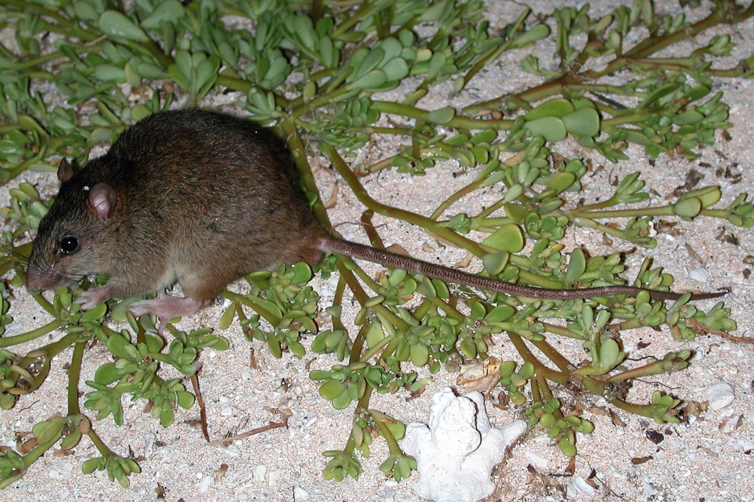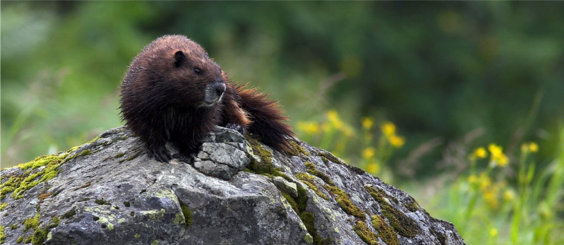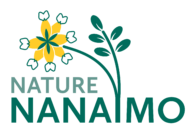Note: Dr. Jamie Gorrell is a faculty member with the Department of Biology at Vancouver Island University. Jamie presented a similar version of his talk at the VIU Science and Technology Lecture Series on March 13, 2019. This report is a synthesis of both talks.

Jamie introduced his topic with a brief discussion of extinction events. He presented slides featuring well-known extinct species such as the Dodo (Raphus cucullatus), an extinct flightless bird that was endemic to the island of Mauritius east of Madagascar in the Indian Ocean, and the Tasmanian tiger (Thylacinus cynocephalus), the largest known carnivorous marsupial mammal last captured alive in Tasmania in 1933. However, he also noted a more recent extinction, attributed to climate change. Australian researchers reported in 2016 that rising sea levels extirpated a rodent that lived on a tiny outcrop in the Great Barrier Reef, in what they say is the first documented extinction of a mammal species due to human-caused climate change. The rodent was known to have lived only on Bramble Cay, a minuscule atoll in the northeast Torres Strait, between the Cape York Peninsula in the Australian state of Queensland and the southern shores of Papua New Guinea. The long-tailed, whiskered creature, called the Bramble Cay melomys (Melomys rubicola), was considered the only mammal endemic to the Great Barrier Reef.

Jamie listed the five mass extinction events identified in the fossil record (Ordovician-Silurian extinction—440 million years ago, Devonian extinction—365 mya, Permian-Triassic extinction—250 mya, Triassic-Jurassic extinction—210 mya, and Cretaceous-Tertiary extinction—65.5 mya), then pointed out that we are entering a sixth major extinction event, with human activities believed to be the causative factor. In Canada, it was noted that one-half of species showing declines are considered endangered. The Living Planet Report Canada (2017) by the conservation group WWF-Canada, found 451 of 903 mammal, bird, reptile, amphibian and fish species across the country — half the species in the study — declined in number between 1970 and 2014. Mammals declined an average of 43 per cent, amphibians and reptiles lost 34 per cent of their populations on average, and fish populations declined by 20 per cent. Interestingly, a question being posed today is whether we should be saving endangered species—it has become an economic problem as well as ecological.
From extinctions and endangered species, Jamie moved on to conservation and recovery programs. He stressed that recovery plans tend not to mention genetic aspects, yet preserving genetic diversity is critical to successful reintroductions. Conservation options include in situ (protecting wild populations in their natural habitats) and ex situ (captive breeding in artificial environments). Captive breeding is helpful in promoting the survival of adults and offspring, but lacks a natural mating system, can cause maladaptations to the natural environment, reduces fertility, and increases the risk of inbreeding. Nevertheless, Jamie emphasized that captive breeding programs have been useful in saving species such as the European bison (Bison bonasus), Whooping crane (Grus americana), and Black-footed ferret (Mustela nigripes). He drew attention to the International Union for Conservation of Nature and Natural Resources (IUCN) publication, Global Reintroduction Perspectives: 2018, which covers examples of a wide range of projects from beetles to corals, fish to giant salamanders, lizards to pythons, macaws to oryx and orchids to lichens in 59 case studies. These range from highly successful to some failures, which illustrates that species restoration can be a very challenging exercise as shown in the graphs below:

These results show that reintroduced mammals do much better than other taxa. While reintroduction programs are helpful, captive bred individuals tend to be more susceptible to mortality when released into the wild. Maladapted genes in artificially bred organisms are not really helping wild populations. Genetic adaptation to captivity can make some animals less responsive to predator scents and can reduce fertility in females. Consequences of inbreeding can include less resistance to diseases, as well as physical abnormalities that can limit hunting or reproductive success in natural habitats. Jamie explained the concept of a “genetic bottleneck,” an event that drastically reduces the size of a population. This population bottleneck produces a decrease in the gene pool of the population because many alleles, or gene variants, that were present in the original population are lost. Due to the event, the remaining population has a very low level of heterozygosity, or genetic diversity, which means that the population as a whole has fewer genetic characteristics.

To counteract such inimical effects, Jamie suggests that genome sequencing of each individual can be used to guide successful breeding programs. As an example, he described work with the kākāpō (Strigops habroptilus), a unique, critically endangered parrot found only in New Zealand. The project, called Kākāpō125+, aims to sequence the genomes of all living kākāpō plus some important recently-deceased individuals. The name refers to the total of 125 kākāpō living in 2015 when the project started. The overarching aim of the project is to improve genetic management of kākāpō, particularly to address the key issues hampering recovery: infertility and disease.
Finally, Jamie discussed more local initiatives involving the Vancouver Island marmot (Marmota vancouverensis), one of the largest members of the squirrel family. Other members of the Sciuridae include chipmunks, squirrels and woodchucks. The Marmot Recovery Foundation has led much of the work done on preserving this species. A rapid population decline in the mid 1990’s enforced the need for a single species approach to recovery. The recovery strategies since then have identified captive-breeding combined with the reintroduction of captive-born animals to the wild as the best hope for increasing Vancouver Island marmot populations within a reasonable period of time and reducing the risk of extinction.

Maintaining a healthy captive population will provide animals for annual release while protecting the genetic diversity of the species. Marmots chosen for breeding or release to the wild are carefully selected according to their genetic importance to ensure the general health of the population. The recovery goal is to establish a self-sustaining wild population of Vancouver Island marmots. Specifically, the goal calls for 400-600 marmots living in three metapopulations. The stipulation of three geographically-distinct populations is based on historic marmot distributions, and takes into account the water barriers (in particular, Buttle Lake, Alberni Inlet and Lake Cowichan) that will likely isolate many colonies from one another. The three planned recovery areas are the Nanaimo Lakes region, the Mt. Washington-Forbidden Plateau region, and the western Strathcona Provincial Park region.
One interesting complication is the fact that the Vancouver Island marmot lives in isolated alpine habitats (sky islands) that are now shrinking as a consequence of climate change. Trees are moving upslope and, in the process, reducing the extent of the marmot’s preferred alpine domain.
Jamie’s research plans include quantifying genetic diversity, investigating past breeding events and quantifying inbreeding, characterizing mating systems of wild populations and social relatedness, and determining the reproductive success of reintroduced marmots. A major part of his research involves sequencing the genomes of every Vancouver Island marmot.
